Enhancing Soft Skills for DevOps Engineers: Essential Non-Technical Skills to Thrive
Collaboration Collusion and Consipiracy
Making Work Visible
Welcome SoftSkills students, Michael Forrester here. In this lesson, we’ll explore why making work visible is a cornerstone of a thriving DevOps culture, how it boosts collaboration across teams, and practical strategies to implement transparency at every stage.
Why Making Work Visible Matters
Visibility transforms how teams coordinate, prioritize, and deliver value. In DevOps, where collaboration extends beyond individual teams, transparent workflows foster trust, reduce bottlenecks, and accelerate feedback loops. Remember, what cannot be seen or measured cannot be managed or improved—early detection of scope changes saves time and aligns deliverables with stakeholder expectations.
Note
Establishing transparent practices early helps identify risks and dependencies before they become blockers.
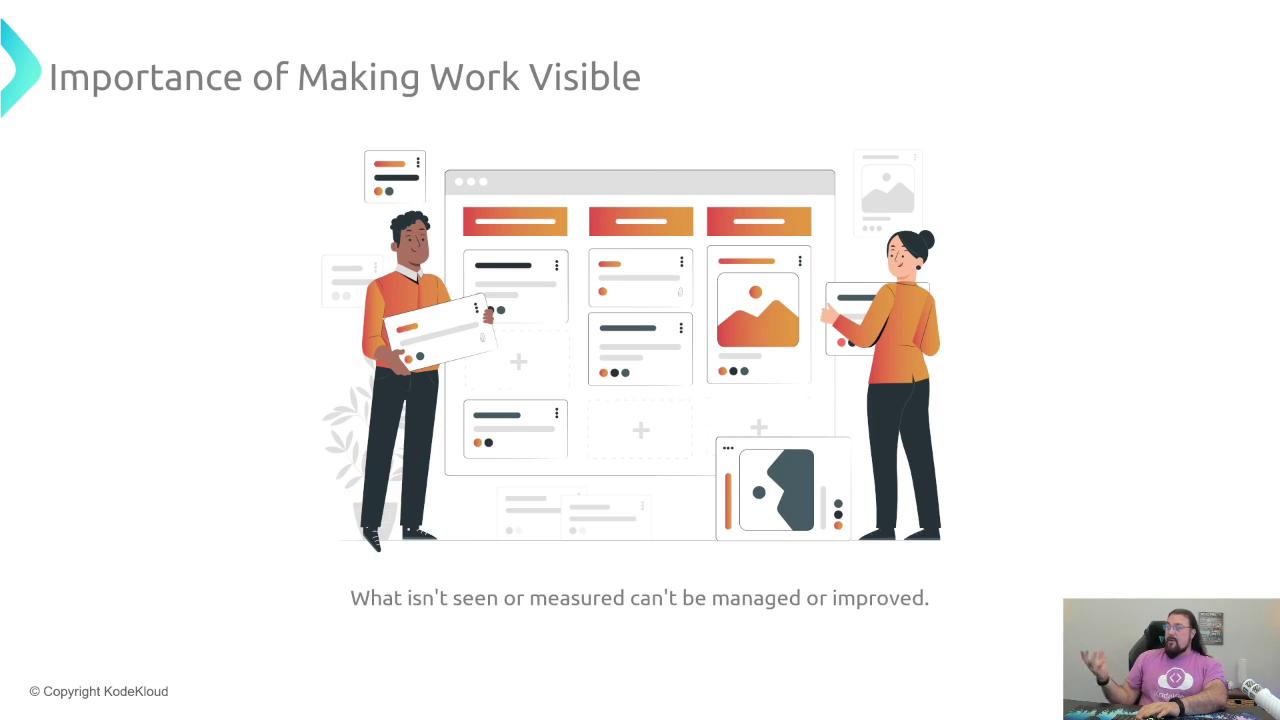
Core Pillars of Transparency
Frameworks like Scrum and Kanban embed transparency, inspection, and adaptation into their processes. Regular sprint reviews, daily stand-ups, and visual boards create ongoing feedback loops, helping teams inspect work increments and adapt quickly.
| Framework | Transparency Mechanism | Benefit |
|---|---|---|
| Scrum | Sprint Reviews, Stand-ups | Aligned priorities, continuous feedback |
| Kanban | WIP Limits, Kanban Boards | Visual flow, bottleneck identification |
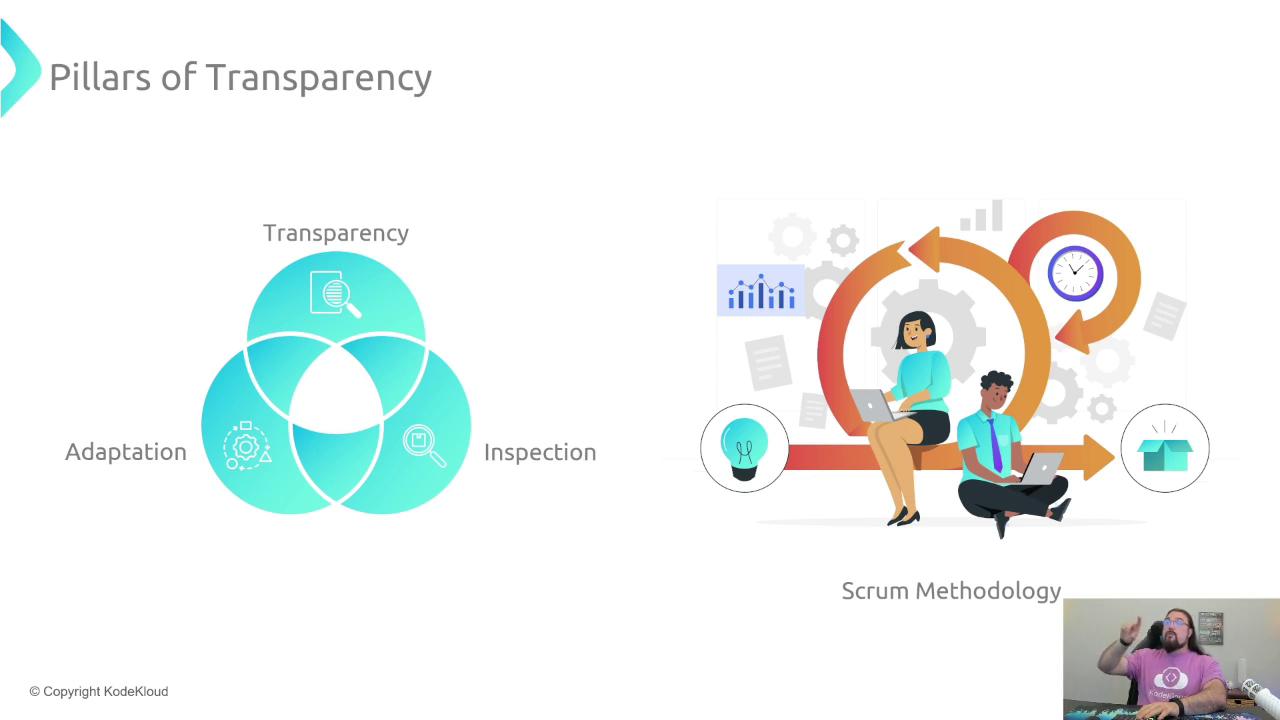
Visualizing Development and Delivery Phases
Whether your team adopts Scrum sprints or Kanban flow, a visual board tracks tasks through phases—development, testing, deployment, and operations. Each transition point offers a clear snapshot of progress and potential bottlenecks, ensuring releases stay on schedule and aligned with business goals.
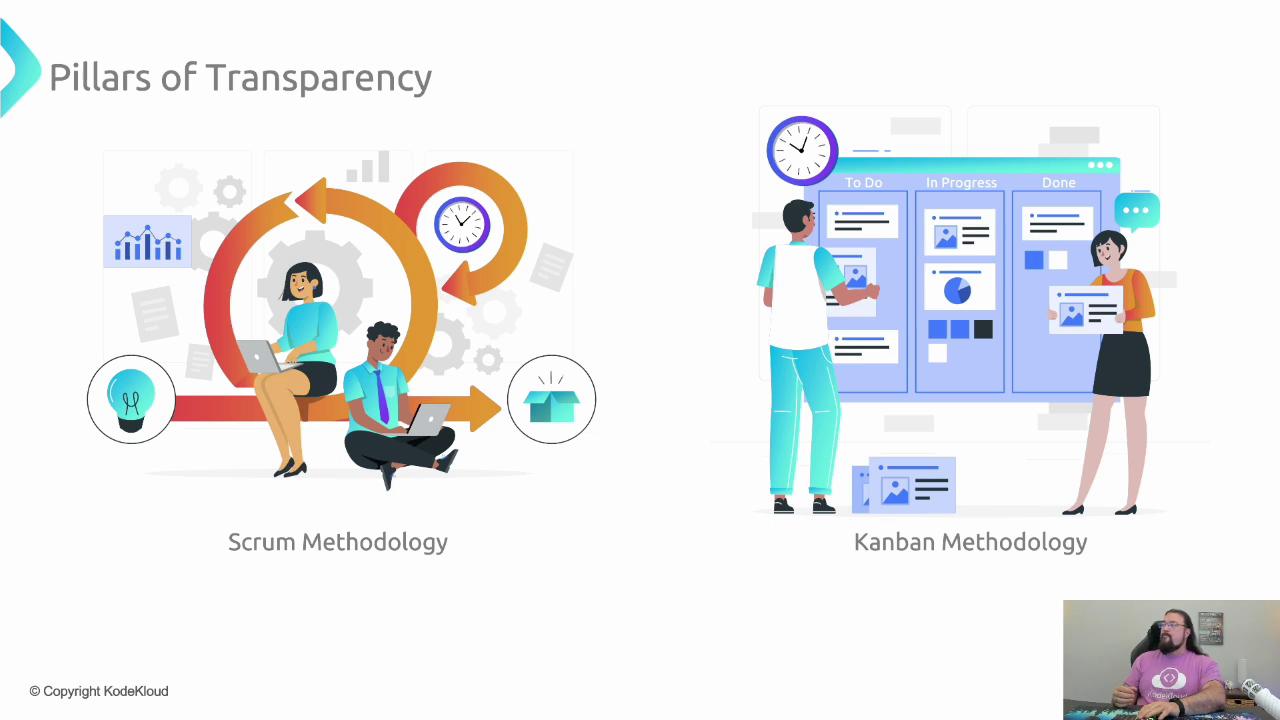
Common Barriers to Visibility
Despite the benefits, teams may resist transparency due to:
| Barrier | Impact | Mitigation |
|---|---|---|
| Fear of criticism | Stalled updates, hidden issues | Promote a blameless culture and psychological safety |
| Desire for perfection | Delayed feedback, scope creep | Encourage incremental delivery and MVPs |
| Lack of trust | Siloed communication | Facilitate open demos and cross-functional reviews |
Warning
Insufficient psychological safety can derail transparency initiatives—address team dynamics before rolling out new visibility practices.
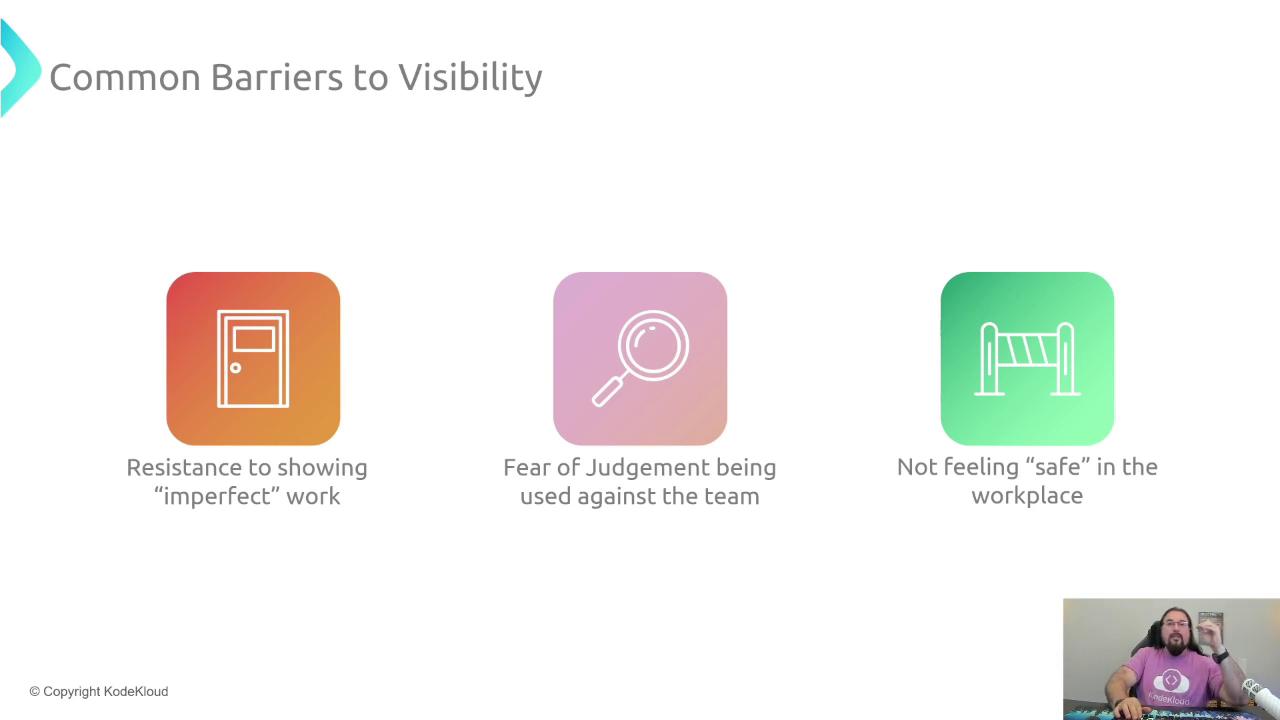
Strategies to Enhance Visibility
Implement these strategies to foster a transparent workflow:
- Share work updates in stand-ups, newsletters, or chat channels
- Leverage Scrum and Kanban tools for real-time board views
- Map and track cross-team dependencies explicitly
- Conduct regular retrospectives to surface hidden issues
- Solicit continuous feedback from users and stakeholders
- Visualize metrics like cycle time and lead time to drive improvement
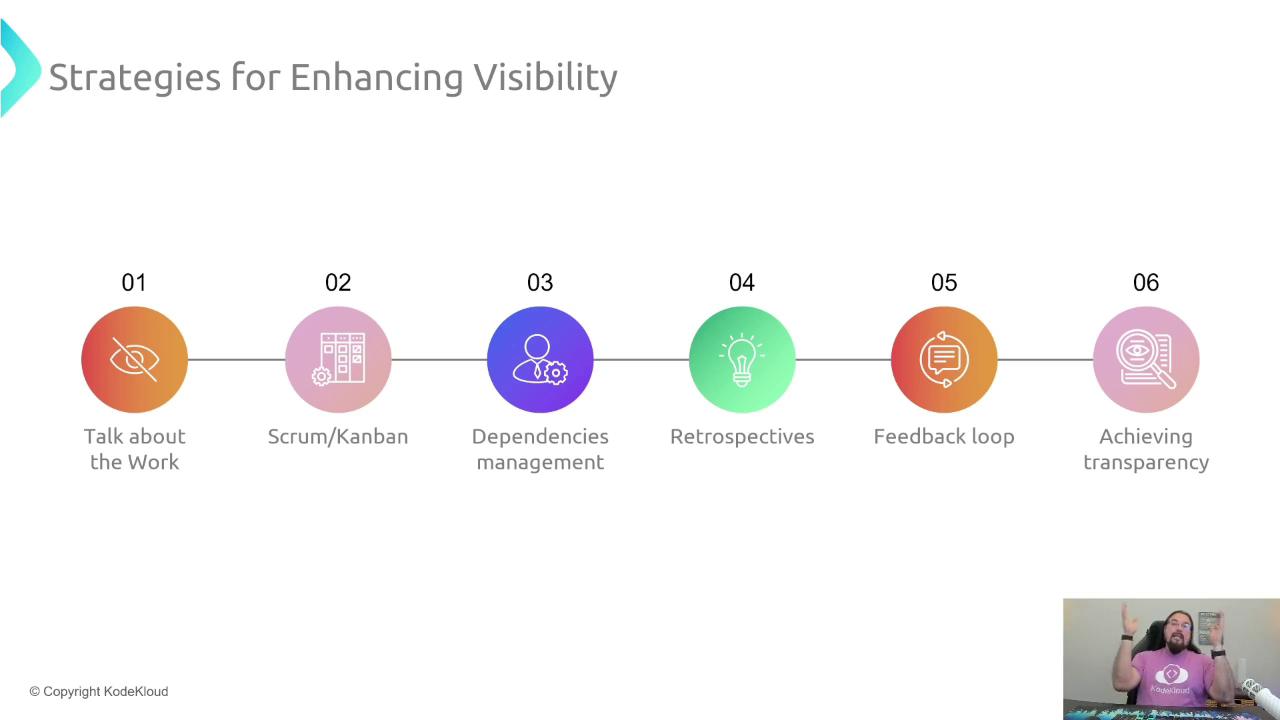
Navigating Resistance
Different personas may push back against visibility efforts. Tailor your approach:
- Skeptics: Present data-driven case studies on efficiency improvements
- Followers: Motivate active participation, not just compliance
- Diehards: Acknowledge experience and highlight incremental gains
- Saboteurs: Engage early, set clear boundaries, and empathize with concerns
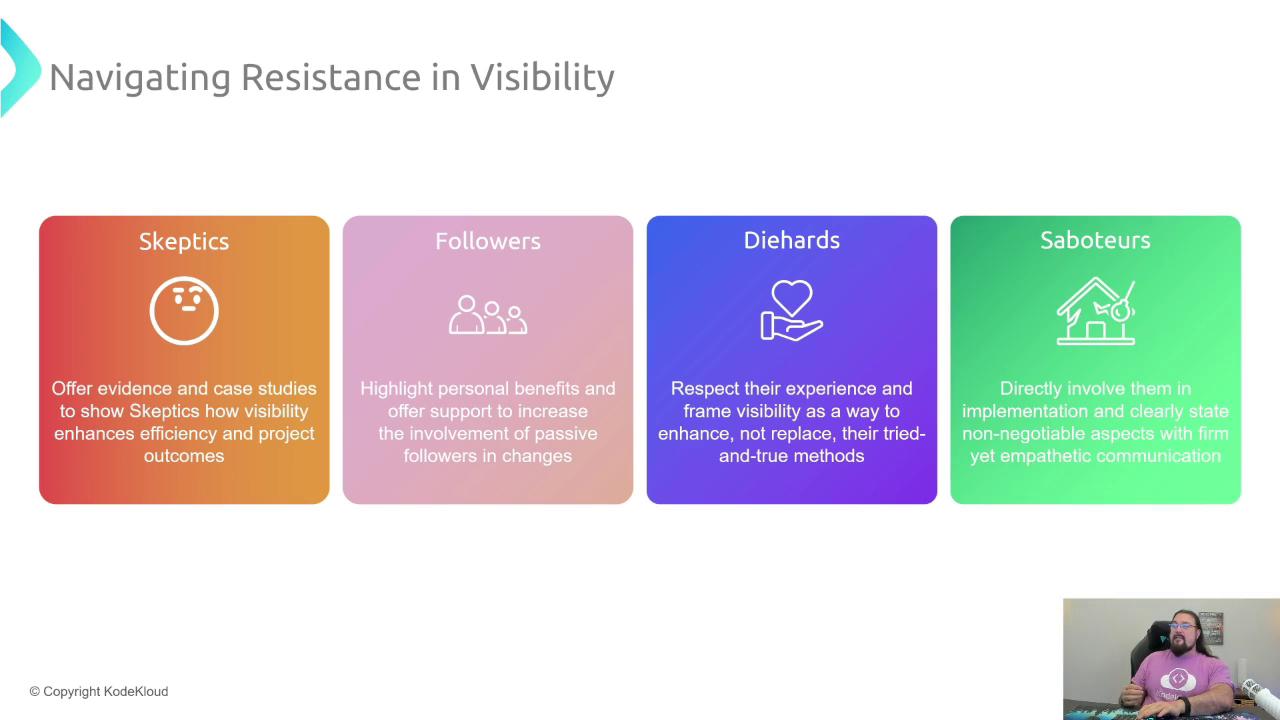
Summary
Making work visible drives faster feedback, better alignment, and continuous improvement. By leveraging frameworks like Scrum and Kanban, visualizing workflows, and addressing cultural barriers, teams can boost transparency and deliver higher-quality outcomes in a true DevOps environment.
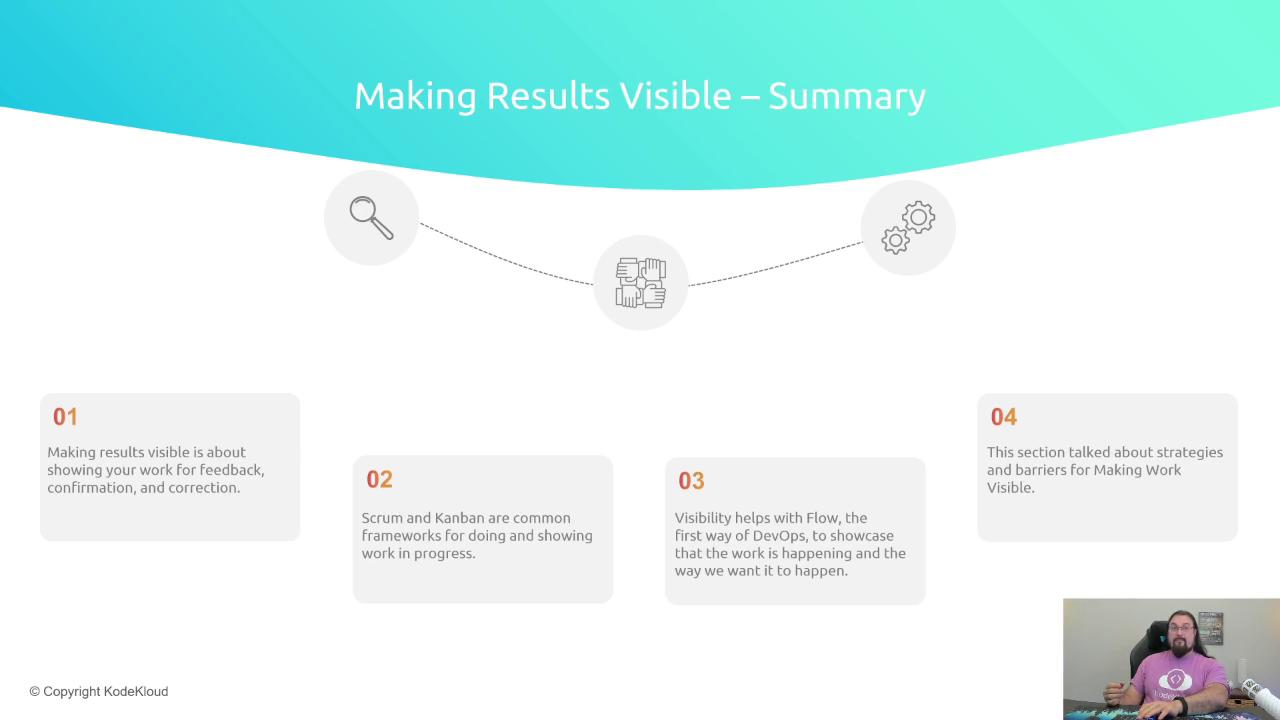
Further Reading
Thank you for following this lesson on making work visible. See you in the next session!
Watch Video
Watch video content